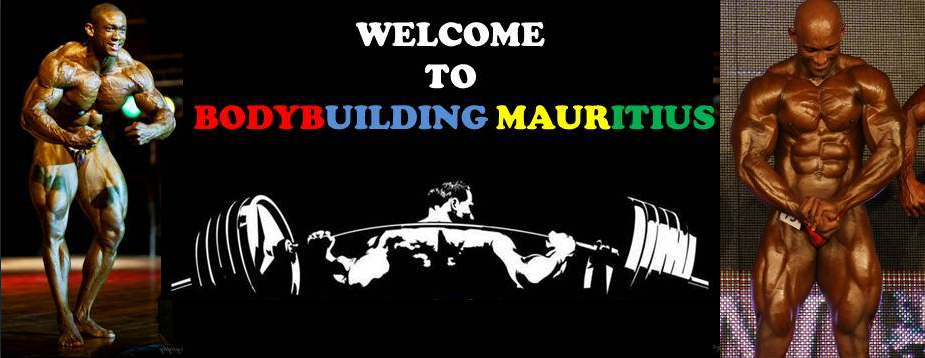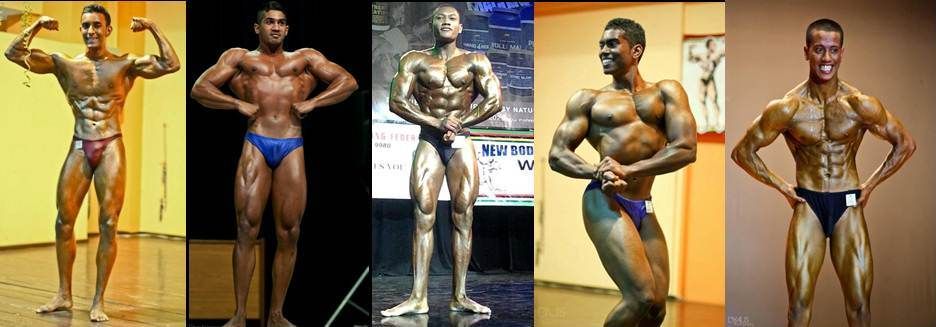NUTRITIONAL BASICS FOR BODYBUILDING SERIES
I wanted to write about macro nutrient basics for bodybuilding but my intuition told me to start this series with a more fundamental issue: the realisation of the importance of nutrition. When it comes to building muscle, resistance training tears down the muscle and nutrition is one of the essentials to repair the muscle and allow it to get bigger and stronger. If you don't feed the body properly then you aren't going forward.
"Bodybuilding is 70, 80, 80.5, 90.75, 95%...of nutrition"
Bodybuilding has never been 80% Nutrition and 20% training. It does mean that if you slack in your training but eat properly you will only be 20% short of your desired progress. Likewise, it doesn't mean that if you train hard and slack in your nutrition you will make only 20% of your desired progress. Your progress may be 0% or you may even regress. This percentage thing must be interpreted carefully because what it simply serves the purpose of highlighting the importance of nutrition in your bodybuilding progress.
Don't have time to eat?
If you are serious about building muscle then you must find time to eat. Even if you are at work and your boss is constantly on your back you must find the time to eat. If you still cannot smuggle a tupperware rice and chicken in your office desk there are a lot of convenient options like shakes which take 2 minutes to prepare and 30 seconds to drink.
The bottom line
Part One:
Realising the importance of nutrition
Researched and composed by Vic Goyaram
I wanted to write about macro nutrient basics for bodybuilding but my intuition told me to start this series with a more fundamental issue: the realisation of the importance of nutrition. When it comes to building muscle, resistance training tears down the muscle and nutrition is one of the essentials to repair the muscle and allow it to get bigger and stronger. If you don't feed the body properly then you aren't going forward.
"Do you eat as hardcore as you train?"
More often than not you will see people who train very hard but fail to work as hard when it comes to their nutrition. Chances are that many of us fall in such a category too. Please take some time and reflect on these questions:
- Do you step out of the house everyday with your meals packed for the day?
- What's in your lunch bag today? Have you even packed lunch?
- You have planned a hardcore arm workout today but will your eating be as hardcore?
- You just ingested that pre-workout. What will you have post-workout?
The reality is that most people over-train and eat inappropriately. Building muscle requires great efforts both in the gym and in the kitchen/ meal table as proper nutrition will account for your bodybuilding success or lack thereof. Always think of the bicycle analogy: The two wheels of a bicycle represent training and nutrition. If one of the wheels is faulty or inadequate, the bicycle will be dysfunctional. Likewise, training and nutrition are intimately related. I know too many people who train really hard but fail to progress. Most of the time it is simply because their nutrition is inadequate. It is not because they lack hormones in the body or lack genetics.
"But it is damn expensive to eat properly"
For sure, food is getting really expensive and there is little we can do about it. Some have limited incomes, others are in debt or are still studying and have no income. While some of you reading this have no problem with money, many others do struggle. I understand them because I did face difficulties too when I was studying.
Instead, what you must do is focus on the things that you can do rather than focus on the things that you can't do.
Again, when I was a student I loved to drink those protein shakes but couldn't afford to even use what I was selling. The R250 (at that time) jar of protein was out of bounds but the R60 I had in the pocket could buy me nearly 2 trays of 30 eggs that always go on special at Pick and Pay. That's 60 eggs. 60 x 6g protein per egg (average)=360g. That's more than half the amount of protein in the jar for a mere quarter of the price.
Do whatever is possible to bring in the cash for food. If this means working harder to earn more money, studying harder to get a job that earns well, working part time to get some income, applying for a higher paying job or going to study to improve qualifications for a better job, then do it. Do not sit in your comfort zone. Do not sit on your ass and complain that others can while you can't.
Don't give excuses.
"Food for fuel, not comfort"
Instead, what you must do is focus on the things that you can do rather than focus on the things that you can't do.
Again, when I was a student I loved to drink those protein shakes but couldn't afford to even use what I was selling. The R250 (at that time) jar of protein was out of bounds but the R60 I had in the pocket could buy me nearly 2 trays of 30 eggs that always go on special at Pick and Pay. That's 60 eggs. 60 x 6g protein per egg (average)=360g. That's more than half the amount of protein in the jar for a mere quarter of the price.
Do whatever is possible to bring in the cash for food. If this means working harder to earn more money, studying harder to get a job that earns well, working part time to get some income, applying for a higher paying job or going to study to improve qualifications for a better job, then do it. Do not sit in your comfort zone. Do not sit on your ass and complain that others can while you can't.
Don't give excuses.
"Food for fuel, not comfort"
When you go shopping for food with limited cash, you may be tempted to buy a lot of unnecessary stuff. That's the way shops work, enticing you to buy more things. We can't blame them, it is their business. But as a bodybuilder, buy the type of food that will help your physique. Buy something if it is really necessary for your goals. When stepping into that shop, tell yourself that you're going to buy only what will bring you closer to your goals and get the hell out of there. I personally buy mostly mixed vegetables, oats, eggs and chicken breasts whenever I go grocery shopping. I am never going to buy custard powder or a packet of biscuits even though I sometimes want it.
 |
| Do whatever you can: my three solid meals for the day. Oats and bananas and chicken breasts. |
 |
| Seriously? |
Bodybuilding has never been 80% Nutrition and 20% training. It does mean that if you slack in your training but eat properly you will only be 20% short of your desired progress. Likewise, it doesn't mean that if you train hard and slack in your nutrition you will make only 20% of your desired progress. Your progress may be 0% or you may even regress. This percentage thing must be interpreted carefully because what it simply serves the purpose of highlighting the importance of nutrition in your bodybuilding progress.
Don't have time to eat?
If you are serious about building muscle then you must find time to eat. Even if you are at work and your boss is constantly on your back you must find the time to eat. If you still cannot smuggle a tupperware rice and chicken in your office desk there are a lot of convenient options like shakes which take 2 minutes to prepare and 30 seconds to drink.
 |
| Do what you have to do |
- Nutrition is a key ingredient
- Do not overlook the importance of feeding your body properly
- Focus on the things you can do, rather than on the things you cannot
Future articles in this series will deal on more specific topics of nutrition.
Join us for discussions on our facebook group
Free advice & daily bodybuilding talk
Your #1 Bodybuilding destination in Mauritius
Free advice & daily bodybuilding talk
Your #1 Bodybuilding destination in Mauritius
Like my personal Facebook Page
------------------------------------------
Join us for discussions on our facebook group
Free advice & daily bodybuilding talk
Your #1 Bodybuilding destination in Mauritius
Join us for discussions on our facebook group
Free advice & daily bodybuilding talk
Your #1 Bodybuilding destination in Mauritius
_________________________________________________________________________
©,2013, Veeraj Goyaram, Bodybuilding Mauritius. Any reprinting in any type of media is prohibited.
Disclaimer: The Content on this site is intended to be used for educational and entertainment purposes only. It is not intended to be and should not be interpreted as medical advice or a diagnosis of any health or fitness problem, condition or disease; or a recommendation for a specific test, doctor, care provider, procedure, treatment plan, product, or course of action. BODYBUILDING MAURITIUS is not a medical or healthcare provider and your use of this site does not create a doctor / patient relationship. We disclaim all responsibility for the professional qualifications and licensing of, and services provided by, any physician or other health providers posting on or otherwise referred to on this Site and/or any Third Party Site. Never disregard the medical advice of your physician or health professional, or delay in seeking such advice, because of something you read on this Site. We offer this Site AS IS and without any warranties. Correspondence: vicgoyaram@gmail.com
_______________________________________________________________________________


















.jpg)









.jpg)





.jpg)

.jpg)























